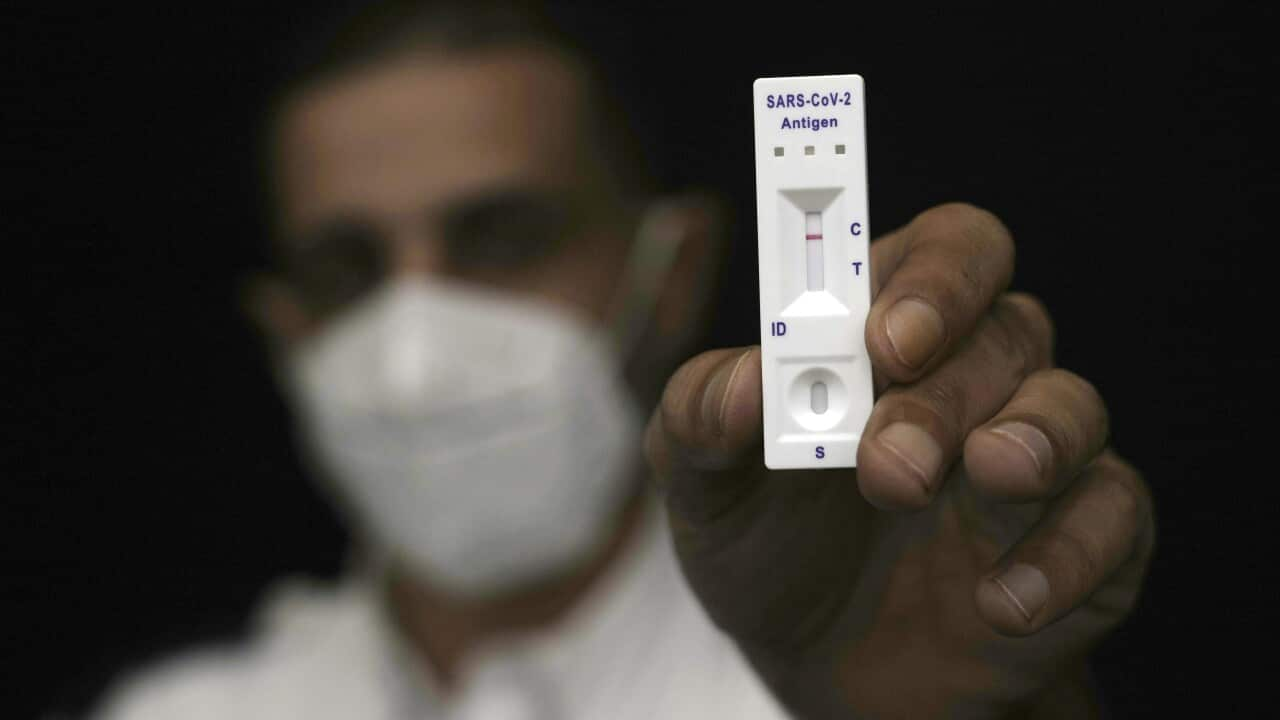A vaccine that was almost ready even before COVID-19 existed
There was a time, not a long time ago, when words and terms like "COVID" and "coronavirus" were not uttered millions of times every day. In fact, the world had almost forgotten about them, after the SARS outbreak that took place between 2002 and 2004.
But Dr Maria Elena Bottazzi didn't forget. “People had lost interest in coronavirus and SARS so we ‘adopted’ them,” she said.
This meant that in 2020, when billions of people were entering the first pandemic of their lives, Dr Bottazzi and her team were ahead of the game, ready to apply what they had learnt in years of research on SARS to the fight against COVID-19. Dr Bottazzi is professor and Associate Dean at the National School of Tropical Medicine at Baylor and Co-Director of the Texas Children’s Hospital Center for Vaccine Development.
Dr Bottazzi is professor and Associate Dean at the National School of Tropical Medicine at Baylor and Co-Director of the Texas Children’s Hospital Center for Vaccine Development.

Dr Maria Elena Bottazzi at Texas Children's Center for Vaccine Development. Source: Texas Children’s Hospital. All rights reserved.
Born in Italy, growing up in Honduras and developing her profession in the United States, Dr Bottazzi says she never disconnected from her multicultural background and that "cultural intelligence" had definitely played a role in developing her approach to medicine and science.
In an interview with SBS Italian, she remarked on her interest and that of her team “in developing vaccines for neglected diseases and for the poor”.
Listen to the interview with Dr Maria Elena Bottazzi (in Italian)

Un vaccino senza brevetto per liberare anche i Paesi poveri dal Covid
Plenty of choice in the vaccine world
There are many COVID-19 vaccines in the world, which were developed in a relatively short timeframe in contrast with the pandemic that has ground the world to a halt for two years now.
In Australia, there are four currently being used in the national rollout, often referred to by the name of the pharmaceutical company that makes them: Cominarty (Pfizer), Spikevax (Moderna), Vaxzevria (AstraZeneca) and Nuvaxovid (Novavax).
Different countries have made different choices on their preferred vaccine, based on several factors including availability and cost.
M-RNA vaccines, despite being a newer technology, were ready far more quickly than more traditional vaccine types but the lack of production facilities and the cost of their components resulted in an output that has been insufficient and unsustainable in terms of costs at a global level.
Vaccines will get more and more expensive
Vaccine prices are bound to rise and some increases have already been experienced in the US, UK and Europe.
According to the Financial Times, the European Union has seen a significant price increase between the initial deals and those that were struck a few months later.
As an example of this, for each Pfizer dose, the price jumped from 15.50 Euros to 19.50 Euros, while Moderna went from US$22.60 to US$25.50.
These are considered by the pharmaceutical companies favourable “pandemic prices” and in the future they will more than likely be a lot higher.
The price of every vaccine varies according to the deals that countries strike with the manufacturers and sometimes less developed countries end up paying more.
Moderna produces one of the priciest vaccines. In a New York Times article it is reported that “Botswana, Thailand and Colombia […] have said they are paying $27 to $30 per Moderna dose”.
The US only paid $15 a dose, also because Moderna received a substantial grant for the development of its vaccine.
The Australian Government hasn’t released any information on its negotiated rates.
What if you can't afford it?
Poorer countries would have a hard time paying those prices and may rely just or mainly on COVAX, the scheme run by the World Health Organization (WHO), UNICEF and others, in which richer countries subsidise vaccines destined for developing countries.
Australia has pledged to supply up to 60 million vaccine doses to the Pacific and Southeast Asia region by the end of 2022 and .
Many deadlines set for that project have been missed, due to poor distribution and vaccine hesitancy in some countries, but also because of donations that are far less than what was pledged and doses that arrive when they’re too close to expiry.
About one third of the world’s population remain unvaccinated.
A vaccine for the world
Even though the vaccine developed at the Texas Children’s Hospital had a scientific head start before the COVID-19 pandemic started, it wasn’t until December 2021 that it was sold to India, which purchased 300 million doses upfront.
“We haven’t had much financial support” for the necessary development, explains Dr Bottazzi, who said that in addition to offering a safe and effective vaccine, it should also be made where it was needed.
We wanted to de-colonize vaccine production, we wanted to offer our creativity so it could be converted into a local product. Corbevax comes from our technology but it’s not ours. It’s India’s.
Corbevax is the name of the vaccine produced by the Indian company Biological E using the Texan team's formula and its cost is significantly lower compared to the mRNA vaccines that have become the standard in wealthy countries, costing the Indian government about $US2 for each dose.
Novavax, which has now been introduced to the Australian rollout, is another protein-based vaccine but according to Dr Bottazzi, the technology they developed is even simpler, more conventional, with the protein grown in yeast. “It’s a little bit like fermenting to make a beer. Instead of making alcohol, we make a protein. It’s vegan,” she said.
“Protein-based vaccines have been widely used to prevent many other diseases, have proven safety records, and use economies of scale to achieve low-cost scalability across the world,” she said.
Some advantages include easier storage conditions compared to other vaccines that are currently used against COVID-19 and a much longer shelf life. According to Dr Bottazzi, thanks to its long life, it could work as a temporary measure against future coronavirus pandemics.
Its reduced cost is the result of using a more established technology and cheap ingredients, but a key factor was also the decision taken by its creators not to patent the vaccine.
It’s my own personal philosophy since I was a student. You don’t make money in tropical medicine or in the academic world.
The success of their endeavours may have taken Dr Bottazzi aback but she said she didn't regret for a moment the decision to leave the vaccine free of patent. “We’re not missing out on the money,” she said.
“We’re gaining so much! We would have never thought that one of our vaccines could end up being made in quantities of hundreds of millions.”
Dr Bottazzi and her team’s recipe has already been shared, beside India, with Indonesia, Bangladesh, Botswana and South Africa and interest has come from Argentina, Mexico, Thailand and other countries.
The Therapeutic Goods Administration (TGA) has confirmed it has not received for the moment an application from Biological E. Ltd to register their COVID-19 vaccine, Corbevax, for use in Australia. Dr Bottazzi leads the team behind the creation of the vaccine alongside co-director of the Center, Dr Peter Homez, and they were both present when US Congresswoman Liz Fletcher announced on a Zoom call in February 2022 her intention to nominate them for a Nobel Peace Prize.
Dr Bottazzi leads the team behind the creation of the vaccine alongside co-director of the Center, Dr Peter Homez, and they were both present when US Congresswoman Liz Fletcher announced on a Zoom call in February 2022 her intention to nominate them for a Nobel Peace Prize.

Drs Peter Hotez and Maria Elena Bottazzi, Co-Directors of Center for Vaccine Development. Source: Texas Children’s Hospital. All rights reserved.
“I was shocked, in disbelief,” Dr Bottazzi said. “I was also grateful as it validates the philosophy not just mine but of our team. Now comes the responsibility of continuing our work, also for the future generations.”
SBS is committed to providing all COVID-19 updates to Australia’s multicultural and multilingual communities. Stay safe and stay informed by visiting regularly the .



